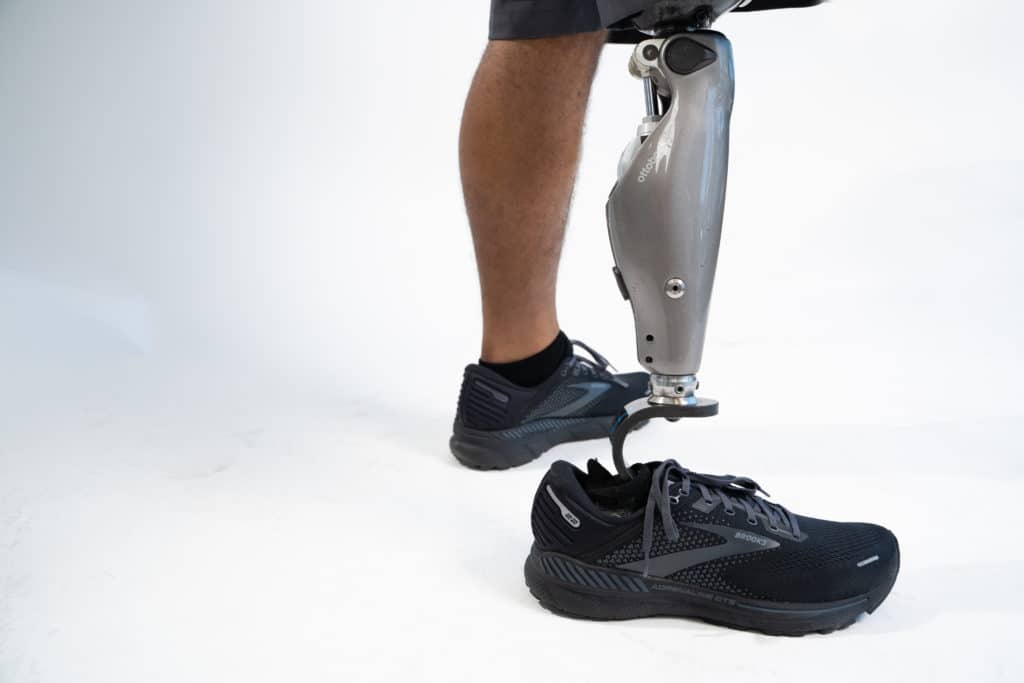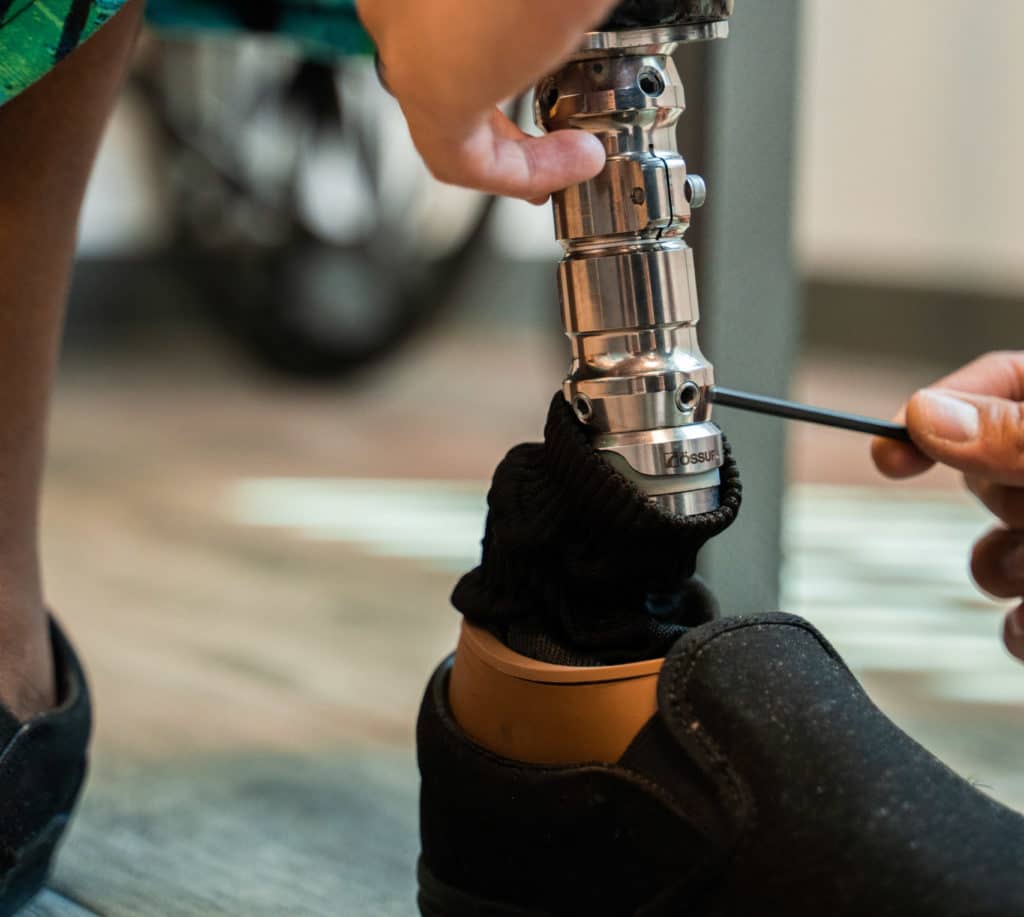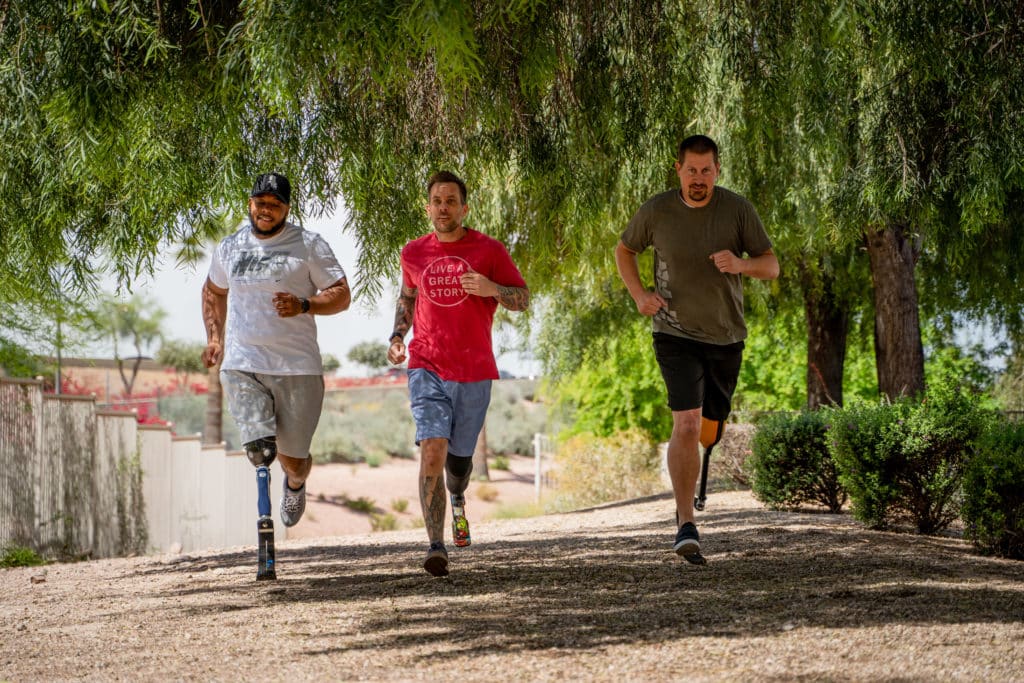
Lower Limb Prosthesis in Phoenix
There are more circumstances than we can count that require the full or partial amputation of a foot, ankle, knee, thigh, or hip. But no matter your circumstance, there are solutions available to help you through your physical, mental, and functional recovery, getting you back to a full and thriving life.
What is Lower Limb Prosthesis?
A lower limb prosthesis is the partial or entire artificial replacement of a lower limb such as your hip, thigh, knee, ankle, and foot. These artificial components, or prosthetics, are used either simply for cosmetic purposes or restoring lower limb function.
Two common amputations of the lower extremities are transfemoral (above your knee) and transtibial (below your knee).
For either cosmetic or functional restoration of your limb, prosthetists will design and fit a prosthetic to your residual limb depending on your particular needs and measurements.
Types of Lower Limb Prosthesis
The three major types of lower limb prosthetics are ankle and foot systems, prosthetic knee systems, and sport-specific foot and knee systems.
Ankle and Foot Systems
- Hydraulics for dampening impact
- Automatically adjustable to walking speeds
- Active propulsion to reduce energy expenditure for walking
- Endoskeletal torsion units for enabling twisting motions
- Ankle adjustments for different shoe heights
Prosthetic Knee Systems
- Body-powered
- Single or multi-axis joints
- Electronically controlled to reduce effort while walking and improve stability
Sport-Specific Foot and Knee Systems
- Can be designed for multiple recreational activities
- Can be specified for particular activities including running, sprinting, skiing, or swimming.
Lower limb prostheses are either exoskeletal or endoskeletal:
Exoskeletal Prosthesis: A fixed, non-adjustable prosthetic limb made of hard plastic or metal for high durability.
Endoskeletal Prosthesis: Less durable and adjustable, containing an inner pseudo skeletal structure covered by soft material and synthetic skin.
Most lower limb prosthetics tend to be endoskeletal for flexibility.

What Are Lower Limb Prosthetics Made Of?
Lower limb prosthetics typically consist of the following components:
- Socket
- Interface (the inner lining that touches your skin)
- Suspension
- Frame
- Knee Unit
- Foot/Ankle Complex
- Hip Joint
Options available for lower limb prosthesis

Partial-Foot Prostheses
Although patients with partial-foot amputations can typically stand and walk without a prosthetic, partial-foot prosthesis can enable ankle motion and support slow to medium walking speeds. Some prostheses can even support running or climbing stairs.
Syme Ankle Disarticulation
This modifies a Syme amputation for better prosthetic fitting and the cosmetic improvement of your ankle.
Below-Knee (Transtibial)
Below-knee prosthesis improves balance, stability, and movement with a range of foot/ankle components available, depending on your particular needs.
Above-Knee
Above-knee prosthetics involve socket, knee/ankle joints, as well as foot components for achieving balanced and stable mobility.
Hip Disarticulation
Hip disarticulation prostheses support amputees who have had an amputation or anomaly at or around a hip joint.
Our Product List
Our orthotics and prosthetics are always up to date with state-of-the-art solutions in the industry and are customized to the needs and goals of each individual patient.
Some of the products we used include:
- Micro Processor Ankle (Freedom International)
- Proflex Foot (Össur)
- Proprio Foot (Össur)
- Triton Smart Ankle (Ottobock)
- Symbionic Leg – Micro Knee and Ankle (Össur)
- Kinterra, Foot and Ankle (Freedom International)
How much is a prosthetic leg?
A prosthetic leg can range from $5,000 to $50,000, depending on how extensive the components used to construct your artificial limb. However, medical insurance typically covers at least part of the cost of prosthetics.

What Your Process Will Look Like
Prosthetic limb services typically begin with a medical specialist called a prosthetist who studies, designs, and fits you with the proper prosthetic based on your needs and bodily measurements. It may take several weeks before a prosthetic is completely developed for use. You will go through a fitting process until the perfect placement is found for your prosthetic limb, which may require some frequent adjusting before completing the process.
Get a lower limb prosthesis evaluation today.
At Pongratz, we offer prosthetic services fit for every patient, no matter your needs. We know very well the impact a lost limb has on anyone, no matter age or stage of life. We’re here for you every step of the way, so call us and let us help you get back to a fully functioning life!
Explore our other services

Need a Second Opinion?
Get Help Now with a Same-Day Appointment
Feeling Frustrated with your Prosthesis or Prosthetists? Pongratz offers a same day appointment for all new prosthetic patients. Request yours today!
With our many facilities across the Valley, all the way to Tucson, we’re always within reach.
